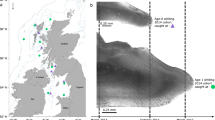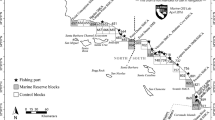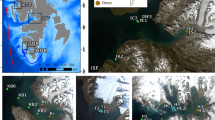Abstract
REFERRING to Prof. Herdman's interesting observations upon the above (NATURE, July 17), I may perhaps mention that the mackerel-drifters, when fishing upon the usual grounds around Scilly and in the Bristol Channel, are largely influenced in their selection of a suitable position by the finding of so-called “yellow water”. This condition of the sea in the area under consideration arises from the presence of vast shoals of Calanoids—e.g. Calanus finmarchicus, Pseudocalanus elongatus, &c.—which impart a yellowish tint to the surface of the water. The sporadic distribution of such copepods, moreover, is often somewhat remarkable; the fishermen state that it is possible at times to observe the entire extent of a “splat” of “yellow water”.
This is a preview of subscription content, access via your institution
Access options
Subscribe to this journal
Receive 51 print issues and online access
$199.00 per year
only $3.90 per issue
Buy this article
- Purchase on SpringerLink
- Instant access to full article PDF
Prices may be subject to local taxes which are calculated during checkout
Similar content being viewed by others
Author information
Authors and Affiliations
Rights and permissions
About this article
Cite this article
BULLEN, G. Mackerel and Calanus. Nature 91, 531 (1913). https://doi.org/10.1038/091531a0
Issue date:
DOI: https://doi.org/10.1038/091531a0
This article is cited by
-
The hidden influence of large particles on ocean colour
Scientific Reports (2021)
-
Remote sensing of zooplankton swarms
Scientific Reports (2019)



